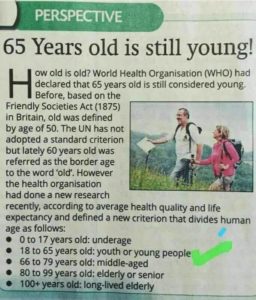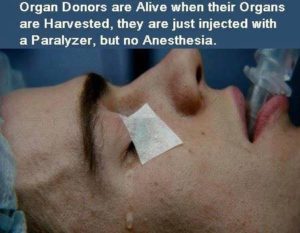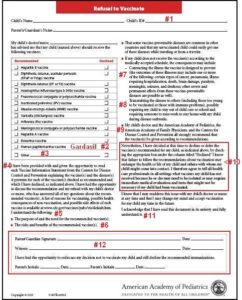
You may have seen a post on the now deceased doctors who found vaccines contain the enzyme nagalase that enables cancer to grow. Here is some data on that.
Nagalase: Friend and Foe?
What is Nagalase?
Nagalase is a protein made by all cancer cells and viruses (HIV, hepatitis B, hepatitis C, influenza, herpes, Epstein-Barr virus, and others). Its formal, official chemical name is alpha-N-acetylgalactosaminidase, but this is such a tongue-twisting mouthful of a moniker that we usually just call it “Nagalase.” (Sometimes, when I want to impress friends with my brilliance, I’ll say the entire word real fast: “alpha-N-acetylgalactosaminidase.” I have found that it’s important to practice beforehand if one doesn’t want to embarrass oneself.)
Why is Nagalase important?
Nagalase causes immunodeficiency. Nagalase blocks production of GcMAF, thus preventing the immune system from doing its job. Without an active immune system, cancer and viral infections can grow unchecked.
As an extremely sensitive marker for all cancers, Nagalase provides a powerful system for early detection.
Serial Nagalase testing provides a reliable and accurate method for tracking the results of any therapeutic regimen for cancer, AIDS, or other chronic viral infection.
Nagalase proves that cancer cells break all the rules
Normal healthy cells cooperate with one another in a concerted effort to further the good of all. Cancer cells refuse to play ball. Their disdainful attitude toward the rest of our cellular community is appalling. For example, these cellular scofflaws ignore clear messages to stop growing and spreading and encroaching on their neighbor’s space. How would you like it if your neighbor moved his fence over into your backyard?
Of all the rules cancer cells break, none is more alarming than the production of Nagalase, the evil enzyme that completely hog-ties the immune system army’s ability to stop cancer cells.
Virus particles also make Nagalase. Their goal is the same as that of the cancer cells: survival by incapacitating their number one enemy: the immune system.
Nagalase precision
Like a stealth bomber, the Nagalase enzyme synthesized in and released from a cancer cell or a virus particle pinpoints the GcMAF production facilities on the surface of your T and B lymphocytes and then wipes them out with an incredibly precise bomb. How precise? Let me put it this way: Nagalase locates and attacks one specific two-electron bond located at, and only at, the 420th amino acid position on a huge protein molecule (DBP), one of tens of thousands of proteins, each containing millions of electrons. This is like selectively taking out a park bench in a major city from six thousand miles away. More astonishing, if that is possible, Nagalase never misses its target. There is no collateral damage.
As you already know, GcMAF is a cell-signaling glycoprotein that talks to macrophages, enabling them to rapidly find, attack, and kill viruses and cancer cells. By activating macrophages, GcMAF triggers a cascade that activates the entire immune system. Blockage of GcMAF production by Nagalase brings all this wonderful anti-cancer and anti-viral immune activity to a screeching halt, allowing cancer and infections to spread.
What does Nagalase actually do? How does it destroy immune functioning and deactivate macrophages?
Once synthesized and released into nearby tissue or into the bloodstream, Nagalase, like that drill sergeant at boot camp, shouts harsh commands at the vitamin D binding protein (DBP) that is about to be turned into GcMAF. Nagalase demands that DBP not, under any circumstances, attach itself to a specific sugar molecule (galactosamine). If DBP has already grabbed (i.e., connected to, using a two-electron, “covalent” bond) a galactosamine sugar molecule, it is commanded to immediately let go. “Leave galactosamine alone, or you’ll be in big trouble!!!” is the Nagalase sergeant’s command. We’ll probably never know whether or not, on some deeper level, DBP knows that Nagalase’s motives are dastardly—but it doesn’t really matter: DBP will definitely always obey. Like the army private, the DBP literally has no choice. Because of the way hierarchies work in cellular biology, proteins must do the bidding of their enzymes. The enzymes, like Nagalase, are the drill sergeant and the proteins, like DBP, are the privates. That’s just the way it is. Obeying the drill sergeant’s command means DBP can’t do its assigned task, that of becoming GcMAF. It is rendered useless. For DBP, on a molecular level, life no longer has meaning.
Unfortunately for cancer and viral patients, DBP had been on its way to becoming GcMAF until the Nagalase drill sergeant so rudely interrupted. Now GcMAF—the one protein our bodies need in order to activate our immune systems—can’t be made. Immune activity screeches to a halt. The defense system protecting us from cancers and viruses has been snuffed out.
Nagalase, using this astonishingly simple yet cunningly subversive technique, emasculates the GcMAF precursor protein (DBP) by knocking off its three sugar molecules. One quick whack by Nagalase and the DBP protein that would have become a GcMAF molecule now limps off into the sunset, permanently disfigured and disabled. With one simple, swift maneuver, Nagalase has brought the entire immune system to its knees.
Here’s how Dr. Yamamoto put it (for clarity, I’ve replaced some of the technical words):
“Serum vitamin D3-binding protein (DBP) is the precursor for the principal macrophage activating factor (GcMAF). The precursor activity of serum DBP was reduced… These patient sera contained alpha-N-acetylgalactosaminidase (Nagalase) that deglycosylates (removes the sugars from) DBP. Deglycosylated DBP cannot be converted to GcMAF, thus it loses the GcMAF precursor activity, leading to immunosuppression.” (Microbes Infect. 2005 Apr;7(4):674-81. Epub 2005 Mar 22. Pathogenic significance of alpha-N-acetylgalactosaminidase activity found in the hemagglutinin of influenza virus. Yamamoto N, Urade M.)
Nagalase testing: former mass murderer now works for the good guys
It’s easy to be a little schizy about Nagalase. On the one hand, this nasty protein’s behavior toward us has been reprehensible and disastrous. Working in cahoots with cancer and HIV—not shy about getting into bed with our mortal enemies—Nagalase can rightfully claim direct responsibility for billions of human deaths. And it would just as soon add you to the list, so we don’t have to be shy about placing Nagalase in the “genocidal murderer” column.
With the advent of Nagalase testing, however, this bad actor now will be harnessed to a useful purpose. By providing us with precise and reliable advance information about enemy operations, Nagalase blood level testing becomes a “Deep Throat” double agent for cancer. He helps us by giving us an early warning sign.
Early detection (using AMAS or Nagalase) saves lives
You don’t want a cancer to have gotten out of control by the time you find and start treating it. When cancers are still young and small, gentle natural therapies are the most effective. Alternative treatments work best on early small cancers by enhancing immune functioning and removing the source of the inflammation that is causing the cancer in the first place. Cancers that have become large enough to see on imaging pose a much more significant threat, and the big guns now become necessary.
The current method for diagnosing most cancers requires us to wait until a mass shows up on imaging (e.g., a mammogram, chest X-ray, or colonoscopy). This approach wastes valuable time and causes needless deaths. But long before imaging can find it, a positive Nagalase (or AMAS test) can tell us that early stage cancer exists somewhere in the body. By enabling earlier and therefore less invasive treatment options, this information provides a huge head-start.
Normally present at only trace levels, Nagalase shows up in the blood when a cancer or virus appears
The malignant and viral entities that make Nagalase are not normally present, so its appearance is a big deal from a diagnostic perspective. When Nagalase shows up, even in very small amounts, we have the earliest glimpse of a new cancer or viral infection. The old adage, “Where there’s smoke, there’s fire” applies here. A positive Nagalase test notifies us that a cancer (or a nasty virus) lurks within.
Nagalase appears in the blood stream when a nascent cancer is just a minute cluster of abnormal cells, long before conventional diagnostic methods can detect it. Through blood testing, we can find this red flag, even when present at exceedingly low levels. Providing us with this early warning sign might not quite qualify Nagalase for the “Good Samaritan” award, but I could go with “extremely useful.” Like a rehabilitated criminal on parole, the potential for harm is still there. For now, however, he’s staying out of trouble and doing community service. Turn your back and he’s a mass murderer again.
Using Nagalase testing to track cancer treatment
Rising Nagalase levels indicate a cancer or virus is growing and spreading. Conversely, Nagalase levels will decrease if the cancer or infection is being effectively destroyed.
Any treatment that lowers cancer cell (or viral numbers) will lower Nagalase levels. Nagalase will, for example, always drop after surgery (whether or not the entire tumor was removed). Chemotherapy and radiation also reduce Nagalase levels. So does GcMAF. If, after these treatments, the depressed level begins to rise again, this is the warning sign that the cancer was not completely removed, and/or that metastatic disease is hiding out somewhere. With viral infections, increasing Nagalase levels indicate return of the infection.
Consecutive rising Nagalase levels are therefore a red flag, warning us it may be time to entertain new treatment options. Conversely, if levels are going down, stay the course: the cancer or virus is going away.
Flat-earth medicine
Many medical professionals don’t feel comfortable with “nonspecific” tests like Nagalase. It drives them nuts to discover that a cancer is lurking somewhere inside without knowing exactly where it is located. “How,” they ask, “do you expect me to treat a cancer I can’t see? Why, I’m not going to tilt at windmills!” This may be a signal that you need to find a different doctor, perhaps one who works in an alternative cancer clinic. Here you will find highly-trained professionals who understand the concept that cancer is a molecular biological change long before it presents visually (by this I mean becomes viewable on imaging).
When GcMAF becomes available, the answer will be easier: a six month course of weekly 100 ng GcMAF intramuscular injections with monthly Nagalase level tests to follow the Nagalase level as it goes back down to baseline. The cancer can be declared cured, even though it never reached life-threatening proportions. (We have a long way to go before this kind of medical behavior will be commonplace and acceptable. The sooner the better, however.)
Nagalase role “under-appreciated”
Nagalase, arguably our most immunosuppressive protein molecule, poses an enormous threat in terms of cancer perpetuation and viruses’ ability to continually defeat us. Yet cancer researchers have not shown any interest in it. (Maybe I’m being a little too generous here; perhaps “clueless” would be more a more accurate depiction.) Why don’t they get it that blasting cancer cells into oblivion with chemo and radiation is usually not sufficient to stop advanced disease and does nothing to address the cause: immunosuppression. Even if we ignore for the moment the excessive collateral damage caused by chemo drugs and radiation, the patient also needs—requires—a healthy immune system to finish the job. If we don’t revive immune function by disabling Nagalase, the cancers and viruses will just keep roaring back. Restoring immunocompetence by negating the stultifying effect of Nagalase should therefore become a primary research goal.
https://www.prod5.com/everything-you-need-to-know-about-vitamin-d-and-cancer-prevention.html










